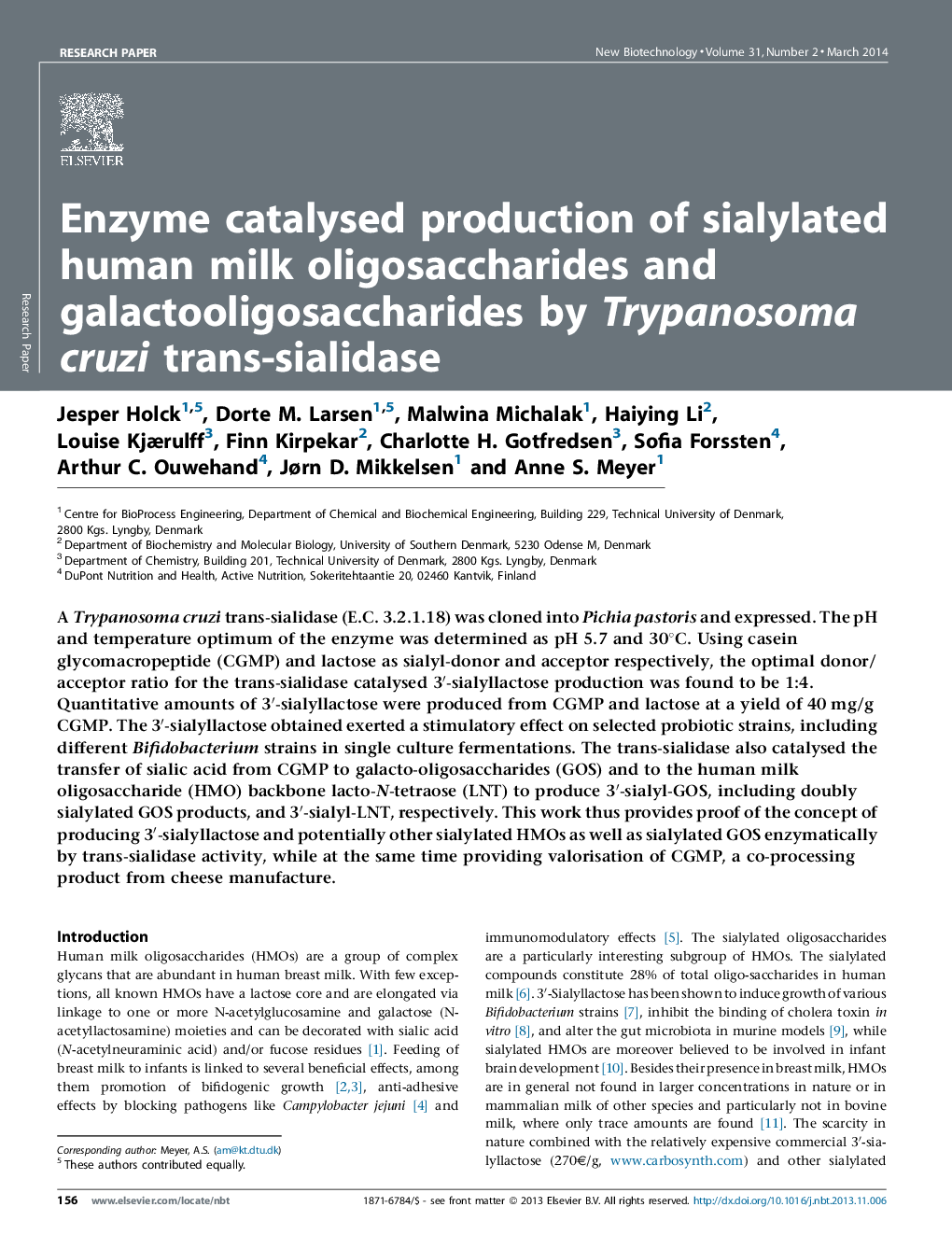| Article ID | Journal | Published Year | Pages | File Type |
|---|---|---|---|---|
| 33024 | New Biotechnology | 2014 | 10 Pages |
•Optimised reaction conditions for Trypanosoma cruzi trans-sialidase.•Quantitative production of 3′-sialyllactose from casein glycomacropeptide and lactose.•Enzymatic production of 3′-sialyl-lacto-N-tetraose.•Enzymatic production of doubly sialylated galactooligosaccharides.•Induced growth of selected Bifidobacterium strains by 3′-sialyllactose.
A Trypanosoma cruzi trans-sialidase (E.C. 3.2.1.18) was cloned into Pichia pastoris and expressed. The pH and temperature optimum of the enzyme was determined as pH 5.7 and 30°C. Using casein glycomacropeptide (CGMP) and lactose as sialyl-donor and acceptor respectively, the optimal donor/acceptor ratio for the trans-sialidase catalysed 3′-sialyllactose production was found to be 1:4. Quantitative amounts of 3′-sialyllactose were produced from CGMP and lactose at a yield of 40 mg/g CGMP. The 3′-sialyllactose obtained exerted a stimulatory effect on selected probiotic strains, including different Bifidobacterium strains in single culture fermentations. The trans-sialidase also catalysed the transfer of sialic acid from CGMP to galacto-oligosaccharides (GOS) and to the human milk oligosaccharide (HMO) backbone lacto-N-tetraose (LNT) to produce 3′-sialyl-GOS, including doubly sialylated GOS products, and 3′-sialyl-LNT, respectively. This work thus provides proof of the concept of producing 3′-sialyllactose and potentially other sialylated HMOs as well as sialylated GOS enzymatically by trans-sialidase activity, while at the same time providing valorisation of CGMP, a co-processing product from cheese manufacture.
